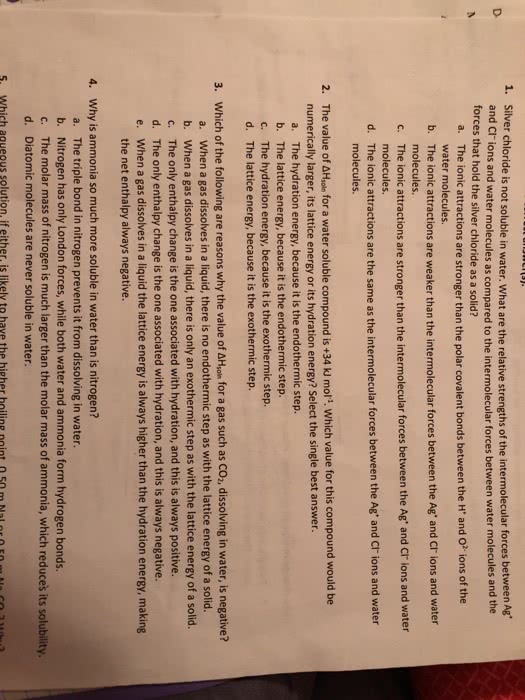CHEM 1032 Chapter Notes - Chapter 11: Intermolecular Force, Molar Volume, Molar Mass
57 views6 pages
9 Mar 2016
School
Department
Course
Professor
Document Summary
Intermolecular forces are the forces that hold many liquids and solids together. The state of a sample of matter solid, liquid, or gas depends on magnitude of intermolecular forces between the constituent particles relative to amount of thermal energy. Recall that the molecules and atoms composing matter are in constant random motion that increases with increasing temperature. The energy associated with this motion is called thermal energy. When thermal energy is high relative to intermolecular forces, matter tends to be gaseous. When thermal energy is low relate to intermolecular forces matters tend to be liquid or solid. 11. 2 solids, liquids, & gases a molecular comparison: The densities of solid and liquid states are much greater than the density of the gas state. The solid and liquid states are more similar in density and molar volume to one another than they are to the gas state.
Get access
Grade+20% off
$8 USD/m$10 USD/m
Billed $96 USD annually

Homework Help
Study Guides
Textbook Solutions
Class Notes
Textbook Notes
Booster Class
40 Verified Answers
Class+
$8 USD/m
Billed $96 USD annually

Homework Help
Study Guides
Textbook Solutions
Class Notes
Textbook Notes
Booster Class
30 Verified Answers
Related textbook solutions
Chemistry: Structure and Properties
2 Edition,
Tro
ISBN: 9780134293936
Basic Chemistry
5 Edition,
Timberlake
ISBN: 9780134138046
Principles of Chemistry Molecular Approach
4th Edition,
Tro
ISBN: 9780134112831
Principles of Chemistry Molecular Approach
3rd Edition, 2014
Tro
ISBN: 9780321971944
Chemistry: Structure and Properties
2nd Edition,
Tro
ISBN: 9780134293936
Chemistry: A Molecular Approach
3rd Edition,
Tro
ISBN: 9780321809247
Chemistry: A Molecular Approach
5th Edition,
Tro
ISBN: 9780134874371
Principles of Chemistry: A Molecular Approach
4th Edition,
Tro
ISBN: 9780134895741
Chemistry: The Central Science
14th Edition, 2017
Brown
ISBN: 9780134414232
